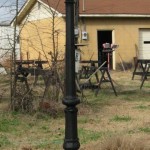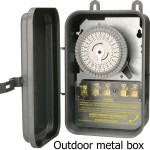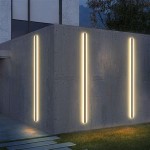What Is the Best Wood Filler for Outdoors?
Wood filler is a versatile material used to repair and restore damaged wood surfaces. It comes in various forms, each with its own unique properties and applications. When choosing a wood filler for outdoor use, several factors must be considered, including the type of wood, the severity of the damage, and the desired finish. This article will delve into the different types of wood fillers suitable for outdoor applications, highlighting their advantages and disadvantages.
Types of Wood Fillers for Outdoor Use
There are two primary categories of wood fillers: oil-based and water-based. Oil-based fillers are generally more durable and resistant to moisture, making them ideal for outdoor use. Water-based fillers, while easier to apply and clean, are less durable and may not be suitable for heavily weathered or exposed surfaces.
Oil-Based Wood Fillers
Oil-based wood fillers are formulated with drying oils like linseed oil or tung oil, providing a robust and long-lasting finish. They are typically available in paste, putty, or epoxy forms. These fillers are known for their excellent adhesion, water resistance, and durability, making them suitable for filling cracks, holes, and knot holes in outdoor furniture, decks, fencing, and other wooden structures.
Advantages
Oil-based wood fillers offer several advantages, including:
- Enhanced Durability: They are highly resistant to moisture, weathering, and UV rays, ensuring long-lasting performance.
- Strong Adhesion: They bond well with wood surfaces, providing a secure and lasting repair.
- Water Resistance: Their oil-based formulation creates a barrier against moisture penetration, protecting the wood from rot and decay.
Disadvantages
Despite their advantages, oil-based fillers also have some drawbacks:
- Difficult to Apply: They can be challenging to apply and require proper drying time, which can be lengthy.
- Messy: They are often messy to work with and require the use of solvents for cleanup.
- Limited Color Options: They typically come in limited color variations, making it difficult to match existing wood tones.
Water-Based Wood Fillers
Water-based wood fillers are formulated with water as the primary solvent, making them easier to apply and clean up than oil-based fillers. They are available in a variety of forms, including pastes, putties, and acrylic-based compounds. While easier to use, water-based fillers are less durable and may not be suitable for all outdoor applications.
Advantages
Water-based wood fillers offer several advantages, including:
- Easy Application: They are easy to apply and smooth out, requiring minimal effort and drying time.
- Easy Cleanup: They can be cleaned up with water and soap.
- Wide Color Options: They are available in a wide range of colors, making it easier to match existing wood tones.
Disadvantages
Water-based fillers also have several disadvantages:
- Less Durable: They are less durable than oil-based fillers and may not withstand extreme weather conditions.
- Susceptible to Moisture: They are more susceptible to moisture damage than oil-based fillers, potentially leading to warping or cracking.
- Limited Adhesion: They may not adhere as well to wood surfaces as oil-based fillers, potentially leading to cracking or peeling.
Choosing the Right Wood Filler
Selecting the appropriate wood filler for outdoor use requires careful consideration of the following factors:
1. Type of Wood
The type of wood being repaired plays a crucial role in choosing the right wood filler. Hardwoods, such as oak and maple, require a more durable filler that can withstand heavy wear and tear. Softwoods, such as pine and cedar, may benefit from a less rigid filler that can flex with the wood.
2. Severity of Damage
The extent of the damage also dictates the type of wood filler needed. Minor cracks and holes can be filled with a simple putty or paste. Larger, more extensive damage may require a stronger epoxy-based filler.
3. Desired Finish
The desired appearance of the repaired surface is another important consideration. Some wood fillers are designed for a smooth, seamless finish, while others are textured to blend in with the surrounding wood grain. Consider the aesthetic requirements and choose a filler that complements the overall design.
Conclusion
Choosing the best wood filler for outdoor use involves a comprehensive assessment of the type of wood, the severity of the damage, and the desired finish. Oil-based fillers offer superior durability and moisture resistance, making them ideal for exposed surfaces. Water-based fillers are easier to apply and clean but may not be suitable for demanding outdoor applications. By carefully evaluating these factors and selecting the appropriate filler, you can ensure the effective repair and restoration of outdoor wooden surfaces.

The Best Wood Fillers 4 Popular Brands Put To Test

An Experiment To Find The Best Stainable Wood Filler

Best Wood Fillers Guide Reviewed By Professionals Rers

The Best Wood Filler Including Latex And Water Based

How To Use Interior And Exterior Wood Filler Finishes Direct

The Best Wood Fillers 4 Popular Brands Put To Test

An Experiment To Find The Best Stainable Wood Filler

Using A Wood Filler For Decks Is Tricky Read This First

An Experiment To Find The Best Stainable Wood Filler

The Best Wood Fillers 4 Popular Brands Put To Test







